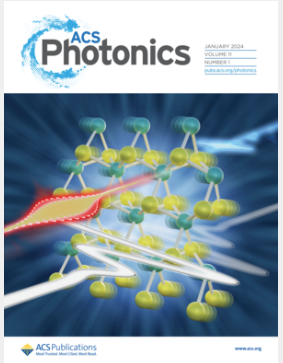Enhanced Delayed Fluorescence in Nonlocal Metasurfaces: The Role of Electronic Strong Coupling
IF 6.5
1区 物理与天体物理
Q1 MATERIALS SCIENCE, MULTIDISCIPLINARY
引用次数: 0
Abstract
Strong light-matter coupling has garnered significant attention for its potential to optimize optoelectronic responses. In this study, we designed open cavities featuring nonlocal metasurfaces composed of aluminum nanoparticle arrays. The surface lattice resonances in these metasurfaces exhibit electronic strong coupling with the boron difluoride curcuminoid derivative, which is known for its highly efficient thermally activated delayed fluorescence in the near-infrared. Our results show that delayed fluorescence induced by triplet–triplet annihilation can be enhanced by a factor of 2.0–2.6 in metasurfaces that are either tuned or detuned to the molecular electronic transition. We demonstrate that delayed fluorescence enhancements in these systems primarily stem from increased absorption in the organic layer caused by the nanoparticle array, while strong coupling has negligible effects on reverse intersystem crossing rates, aligning with previous studies. We support these findings with finite-difference-time-domain simulations. This study elucidates how light-matter interactions affect delayed fluorescence, highlighting the potential applications in optoelectronic devices.

求助全文
约1分钟内获得全文
求助全文
来源期刊

ACS Photonics
NANOSCIENCE & NANOTECHNOLOGY-MATERIALS SCIENCE, MULTIDISCIPLINARY
CiteScore
11.90
自引率
5.70%
发文量
438
审稿时长
2.3 months
期刊介绍:
Published as soon as accepted and summarized in monthly issues, ACS Photonics will publish Research Articles, Letters, Perspectives, and Reviews, to encompass the full scope of published research in this field.
 求助内容:
求助内容: 应助结果提醒方式:
应助结果提醒方式:


